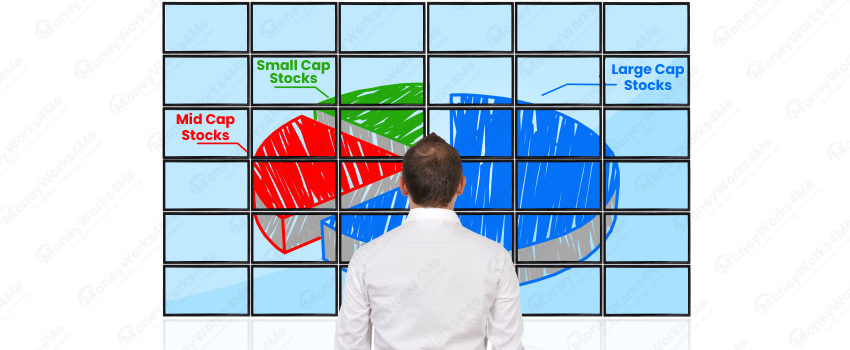The Rule No. 1 of Investing is, ‘Never lose money.’ And, the Rule No. 2 is, ‘Never forget rule No. 1’ –Warren Buffett
Your Stocks portfolio can have 7 types of risks:
(A) At Stock-level: 1. Business Risk, 2. Valuation Risk and 3. Liquidity Risk
(B) At Portfolio-level: 1. Asset Allocation Risk, 2. Market Cap Risk, 3. Sector Exposure, and 4. Stock Exposure
Some risks help you earn good risk-adjusted returns, you need to manage them. Eliminate the rest!
In the previous article, we have seen the risks at the Stock-level. Now, let’s understand the risks at the Portfolio-level. As an Investor you might have done investment in fundamentally sound Stocks. However, composition of portfolio gives rise to 4 types of risk. Let’s look at them
1. Asset Allocation Risk:
Allocation to Equity-Debt should be done based on your Risk Profile—Conservative, Moderate or Aggressive. When your Equity-allocation is higher than what your risk Profile recommends, you are carrying the Asset Allocation Risk. However, when it is lower you are carrying the risk of earning lower returns. The answer lies in re-balancing the Equity-Debt mix back to what is recommended by your risk profile.
2. Market Capitalization Risk:
An often over-looked source of risk in a stock is the size of its market capitalization; a measure of what the market thinks the company is worth. The performance of small companies, some with weak business models, can deteriorate quite easily. Their performance could be affected by economic downturn, spurt in commodity prices, business problems faced by their large customers, lack of resources, etc. There is the additional risk of not knowing enough about the company, since small caps are not studied as closely as large caps. This exposes you to the risk of poor governance and fraud. However, the potential of high returns from small caps cannot be (and should not) be ignored. Small cap companies with a good business model grow faster, which leads to a large rise in their stock prices and results in very good returns.
If you have a Moderate Risk Profile, you should not invest more than 20% in small caps. This will enable you to participate in the potential for growth from small caps, while limiting the Market Capitalization risk to your overall portfolio. Simultaneously, invest 60% in large caps with low volatility and steady returns.
3. Stock Exposure:
Investing typically more than 10% of your portfolioin a single stock exposes your portfolio to the Stock Exposure A stock is exposed to several company-specific risks e.g. business, balance sheet, valuation or people risk. Therefore, a higher investment in one stock has a disproportionately large impact on portfolio performance. E.g. A 20% drop in a stock that comprises 20% of your portfolio reduces your absolute returns by 4%.
Stock concentration can also occur unintentionally. As a value investor, you may have made a sizeable investment in a stock when it was attractively priced. Over time, as a result of both the company performance and the market prices, it can become concentrated in your portfolio.
4. Sector Exposure:
When you invest a significant portion of your portfolio, typically more than 25%, in a single sector, or in multiple sectors that are highly correlated, your portfolio is subjected to the Sector Exposure Risk. Companies in the same sector are likely to be impacted by the same economic factors. Or sometimes the same economic factor adversely impacts multiple sectors. E.g. a sharp increase in interest rates is likely to have a negative effect on both banking and infrastructure sectors. The market reacts and prices fall, sometimes sharply. Therefore, a large exposure to a single sector, or correlated sectors, could result in a drastic fall in your portfolio market value.
However, Sector Exposure may not always be a bad thing. Taking this risk is justified, only when compensated with good returns. For this, you must be sure that the sector/companies will bounce back in the time frame you are willing to remain invested, and that the current prices are very attractive.
You can identify these Portfolio-level risks in your portfolio real-time, and get recommended actions to reduce them at a click of the button, with our Portfolio Manager, for free! Just register and upload your portfolio.
If you liked what you read and would like to put it in to practice Register at MoneyWorks4me.com. You will get amazing FREE features that will enable you to invest in Stocks and Mutual Funds the right way.
Need help on Investing? And more….Puchho Befikar
Kyunki yeh paise ka mamala hai
Start Chat | Request a Callback | Call 020 6725 8333 | WhatsApp 8055769463










